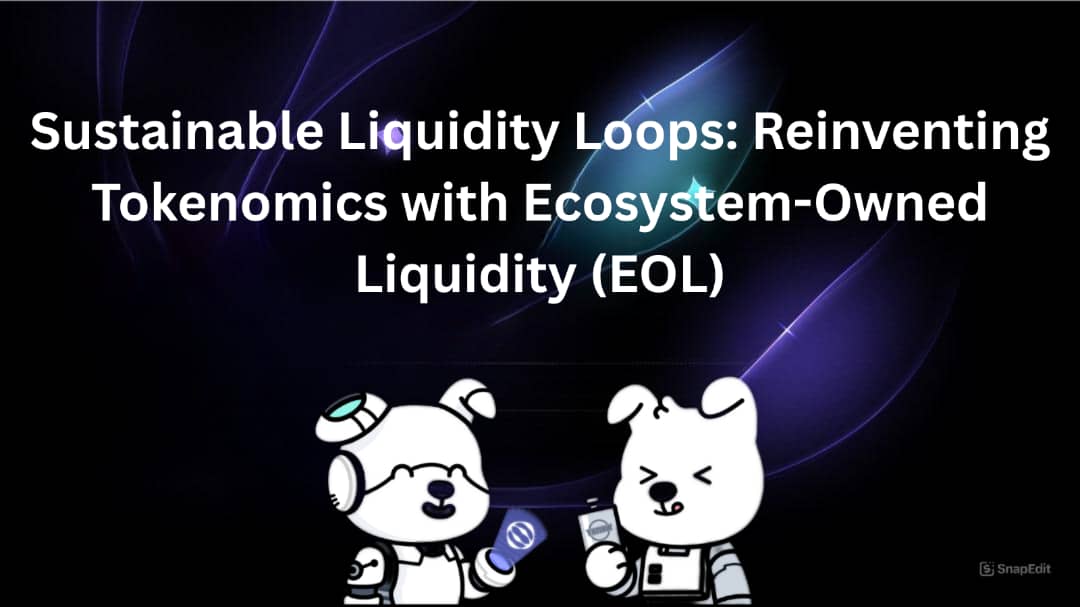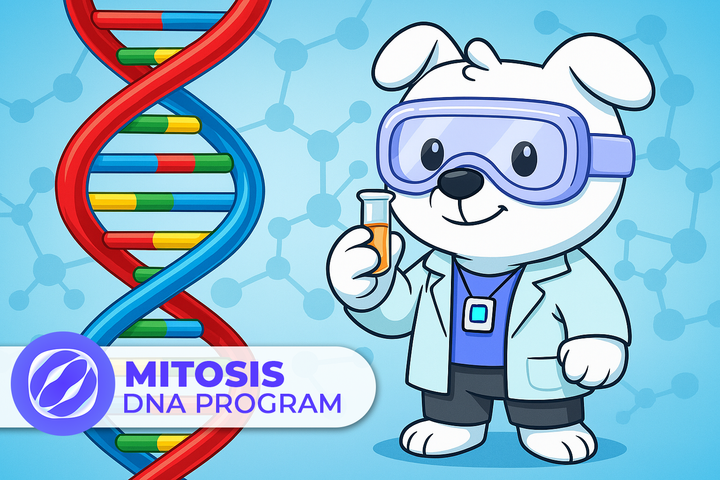Sustainable Liquidity Loops: Reinventing Tokenomics with Ecosystem-Owned Liquidity (EOL)

Introduction:
In DeFi’s early days, tokenomics largely revolved around one principle: attraction. Projects competed in a yield war, offering unsustainable incentives to lure liquidity. While it brought temporary TVL surges, it also left a trail of mercenary capital, abrupt exits, and broken protocols.
The industry is evolving, and so must its liquidity models. Mitosis is leading this shift by championing Ecosystem-Owned Liquidity (EOL), a long-term alternative to unsustainable incentives. With EOL, the goal isn’t just to attract capital, it’s to retain, circulate, and compound value within the ecosystem.
Let’s explore how Mitosis is redefining tokenomics with sustainable liquidity loops.
1.0. The Pitfall of Inflationary Yield Tactics
DeFi's growth was supercharged by liquidity mining and staking rewards, but this model came at a cost.
- Projects printed native tokens to incentivize liquidity providers (LPs).
- The result: short-term yield farmers chasing APYs, then exiting once rewards dried up.
- Over time, protocols suffered from:
i. Token price dilution.
ii. TVL instability.
iii. Unsustainable emissions schedules.
These inflationary tactics were akin to burning capital to attract users effective briefly, but damaging long-term. What the space needed wasn’t more incentives; it needed smarter incentive alignment.
2.0. Enter EOL: A Better Liquidity Framework
Ecosystem-Owned Liquidity flips the script. Instead of renting liquidity, protocols own the liquidity or share ownership with the ecosystem via mechanisms like Mitosis.
Mitosis enables:
- Pooled, multi-chain liquidity governed by community stakeholders.
- Shared vaults where protocols and LPs can deposit and earn yield.
- Composable infrastructure, allowing multiple protocols to tap into the same liquidity layer.
By aligning incentives around shared outcomes, EOL reduces the need for token printing and builds a more durable liquidity base.
3.0. How Mitosis Avoids Inflationary Yield Tactics
Mitosis takes a multi-pronged approach to avoid the pitfalls of traditional DeFi tokenomics:
A. Yield Through Real Activity, Not Emissions
- LP rewards in Mitosis come from protocol fees, cross-chain transactions, and yield optimization, not inflation.
- This makes yield sustainable, directly tied to network usage and growth—not airdropped tokens.
B. Vault Architecture for Efficiency
- LPs deposit into Mitosis Vaults, which are auto-allocated based on optimal strategies.
- Capital is actively working, not idle or dependent on new incentives.
- This structure promotes capital efficiency and self-sustaining growth.
C. Protocol Alignment
- Protocols that tap into Mitosis also stake into the system, becoming co-owners of the liquidity.
- This reduces their need to continuously subsidize users, creating cost savings and stability.
4.0. Designing Circular Value Flows: Protocols <> LPs
At the heart of sustainable liquidity is circularity—where value loops between protocols and LPs in a mutually beneficial way.
Here’s how Mitosis enables this loop:
- LPs provide liquidity to vaults.
- Mitosis allocates capital to protocols or yield sources across chains.
- Protocols pay a performance fee or share revenue from using liquidity.
- LPs are rewarded not just in yield but also governance power.
- LPs re-stake, protocols re-use, and the loop continues.
Rather than one-time transactions, this model fosters ongoing interaction, forming the basis of a circular economy in DeFi.
5.0. Retention Over Attraction: The New KPI
DeFi has long measured success with metrics like:
- TVL spikes
- Wallet growth
- Token price
But in the EOL era, the focus must shift to retention.
Mitosis prioritizes:
- Sticky liquidity: Capital that stays because it’s earning efficiently.
- Protocol engagement: Projects that integrate long-term, not just for short-term boosts.
- Stakeholder alignment: Users, LPs, and protocols all benefit as the system grows.
Instead of chasing hype cycles, Mitosis builds a cohesive, sticky ecosystem that compounds in value over time.
6.0. The Mitosis Liquidity Flywheel
Here’s what a Mitosis-powered liquidity loop looks like in action:
- LPs deposit into cross-chain vaults.
- Mitosis auto-routes capital to high-performing protocols.
- Protocols benefit from deep, low-cost liquidity.
- Revenue flows back to Mitosis, distributed to LPs.
- More LPs join due to attractive, real yields.
- Protocols compete to integrate, deepening the ecosystem.
This flywheel continues spinning without relying on inflation or hype. It’s a true tokenomic engine, not a temporary booster.
Conclusion: Toward Tokenomic Maturity
Mitosis represents a shift toward tokenomic maturity—one where incentives are earned, not given away. In this new era:
- Liquidity is owned, not rented.
- Yield is earned, not printed.
- Value is circular, not extractive.
By building with EOL at the core, Mitosis is designing liquidity loops that are profitable, predictable, and perpetual. For protocols, it means less dependence on emissions. For LPs, it means better returns with lower risk. And for DeFi as a whole, it means a step closer to economic sustainability.
This isn’t just the next evolution in DeFi, it’s the foundation of a resilient financial internet.
Are you ready to be part of this transformation?



Comments ()